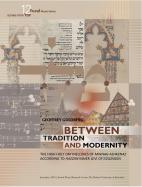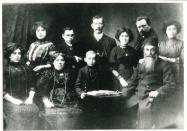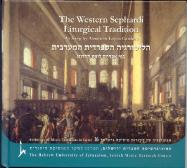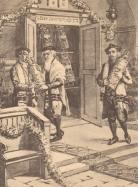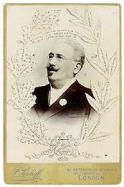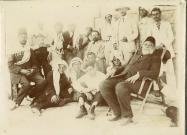(169 results found)
1. Biyshiva shel ma'ala
… … Maier Levy … Chazzan … Chazzanut … Hazzan … Ashkenaz … German Jews … German Synagogue … Ashkenazi … 1. Biyshiva shel ma'ala …
23. Ya'ale taḥanuneinu me'erev
… … Maier Levy … Chazzan … Chazzanut … Hazzan … Ashkenaz … German Jews … German Synagogue … Ashkenazi … 23. Ya'ale taḥanuneinu me'erev …
Idelsohn’s trilingual autobiography and Yiska Idelsohn’s oral memoire
… and in some details. A third, partial autobiography in German was located in 2017 in a batch of uncatalogued … of the Hebrew Union College (HUC) in New York City. This German text provides insights into Idelsohn’s ancestors … Upon Zangwill’s question, how can I return to Russia, where Jews are so maltreated, I answered that I prefer to be with …
A Recovered Voice from the Past
… Preface The history of the Jews, Heinrich Graetz, the great nineteenth-century German Jewish historian, once wrote, is essentially a … as he experienced it across the Baltic region, urban Germany, Ottoman and early British Palestine, Lithuanian …
Tzur mishelo akhlanu
… creativity in most Jewish traditions. The Portuguese Jews in New York City were, according to Rev. Lopes Cardozo, … melody in ternary meter that evokes the tune of a Dutch or German folksong. The strained setting of the text to the …
אבינו מלכנו של לוי
… – Hazzanim, Cantors … Ashkenaz … Chazzan … Chazzanut … German Jews … German Synagogue … Maier Levy … אבינו מלכנו של לוי …
Levi's Avinu Malkeinu
… – Hazzanim, Cantors … Ashkenaz … Chazzan … Chazzanut … German Jews … German Synagogue … Maier Levy … Levi's Avinu Malkeinu …
A Liturgy within the Liturgy: The German Torah Service in Past and Present
… open study session A Liturgy within the Liturgy: The German Torah Service in Past and Present In the framework of the collaborative project German-Jewish Sacred Musical Intersections funded by the … selected approaches to this liturgy among German-speaking Jews throughout Europe and in their American and Israeli …
Idelsohn's Obituary of Abraham Goldfaden
… the meaning of this word was unknown, not only to Jerusalem Jews, but also to Jews in Russia and Romania, and to all the children of the … to break away from the ghetto, such as the composer German composer of Jewish origin Giacomo Meyerbeer (whose …
The Idelsohn Project
… It emerged from his problematic racial theories about Jews and his ethnographic search for a primordial ur-sound … of his autobiography written in Hebrew, English and German with added selections from the oral memoire of …



